bopomofo (ㄅㄆㄇㄈ) https://fr.wikipedia.org/wiki/Bopomofo https://upload.wikimedia.org/wikipedia/commons/7/7f/Bopomofo.png Typography : The word derives from the Greek roots : týpos 'type' and graphía 'writing'. Typography is the art and technique of printing font and making it legible, readabble and appealing when displayed. Calligraphy : the art of producing decorative handwriting or lettering. Etymology from greek : kallos ‘beauty’ + graphein ‘write’. Glyph : Any kind of purposeful mark. In typography, a glyph is "the specific shape, design, or representation of a character". Diacritic : Accent, mark, sign, or glyph added to a letter or to a basic letter. Layout : the basic plan of a two-dimensional design, showing spacing, organization of text, illustration and so on. Mean line : In typography, the mean line is the imaginary line at the top of the x-height. X-height : or corpus size, is the distance between the baseline and the mean line of lowercase letters in a typeface. Counter : In typography anatomy, a counter is the area of a letter that is entirely or partially enclosed by a letter form or a symbol (the counter-space/the hole of). An aperture is the opening between an open counter and the outside of the letter. Kerning : process of adjusting the spacing between characters in a proportional font. Figure space: A figure space or numeric space is a typographic unit equal to the size of a single numerical digit All caps : (or caps lock) text in capital letters without any lowercase letters. Small caps : character typeset that are capital letters but reduced in height and weight close to surrounding lowercase and text figures. Camel case : Uppercase in the middle of a phrase. Practice of writing phrases starting with either case then following words having an initial uppercase letter. (ex : CamelCase) Script : late Middle English (in the sense ‘something written’): shortening of Old French escript, from Latin scriptum, neuter past participle (used as a noun) of scribere ‘write’. In computing, script is an automated series of instructions carried out in a specific order. Subscript and superscript : character that is set slightly below or above the normal line of type, respectively. It is usually smaller than the rest of the text. ² is a superscript. Initial : The first letter of a name occurring at the beginning of a word. Blackboard bold : style of writing bold symbols on a blackboard by doubling certain strokes Spur (éperon in french) : Small diamond shaped stroke placed half way up the stem of certain minuscule letters to reinforce their alignment. Cadel strokes : strokes in the form of arabesques, introduced in the 15th century to decorate. Swash : Typographical flourish, such as an exaggerated serif, terminal, tail, entry stroke, etc., on a glyph Ligature : In writing and typography, a ligature occurs where two or more graphemes or letters are joined to form a single glyph. Hairline : Small thin stroke placed at the extremities of the stems of handwritten letters. Overshoot : Extension of a pointed or round letter Dingbat : Printer's ornament (can be unicode character) Rinceau : Decorative pattern found in margins of manuscript representing intertwined foliages. Illumination (enluminure in french) : the decoration of a manuscript around a text or a letter. Colophon : an inscription at the end of a handwritten book giving details of the date, place, scribe's name of other such relevant information Chrysography : The art of writing letters in gold (with or not gesso) Signature : Script, figure or sign placed to represent a symbol, initial or name. Allograph : In graphemics and typography, the term is a variant glyph or design of a letter or grapheme, number, ideograph, punctuation mark or other typographic symbol Dot : A dot, or bullet is a typographical symbol or glyph used to end a sentence. Palimpsest : a manuscript from which text has been erased and the writing surface used again. Ogham : Ancient alphabetic writing system used by Celtic peoples. Petroglyph : Term used in the description of rupestrian inscriptions to indicate a mark cut in stone. Blackletter, also known as Gothic script, Gothic minuscule or Gothic type, was a script used throughout Western Europe Gothic: Script whose stems have thick and 45° angle trace lines. First introduced in the Anglo-Norman kingdom around 1070. Textualis & Textura : German-made Textualis type is usually very heavy and angular, and there are few characteristic features that are common to all occurrences of the script. One common feature is the use of the letter ⟨w⟩ for Latin ⟨vu⟩ or ⟨uu⟩. Textualis was first used in the 13th and 14th centuries and subsequently became more elaborate and decorated, and it was generally reserved for liturgical works. Johann Gutenberg used a textualis typeface for his famous Gutenberg Bible in 1455. Schwabacher, a blackletter with more rounded letters, soon became the usual printed typeface, but it was replaced by Fraktur in the early 17th century. Cursiva refers to a very large variety of forms of blackletter; as with modern cursive writing, there is no real standard form. It developed in the 14th century as a simplified form of textualis, with influence from the form of textualis as used for writing charters. Cursiva developed partly because of the introduction of paper, which was smoother than parchment. It was therefore, easier to write quickly on paper in a cursive script. Batarde : Mixed style which was widely used in Flanders between Gothic letterform and cursive writing style introduced during the 17th century. Asemic : asemic writing is a wordless open semantic form of writing. Humanist writing: Script used by the Italian Humanist at the beginning of the 15th century. Inspired by Carolingien script, and taken as the model of Roman printing types. Penmanship or Handwriting : Handwriting is the personal and unique style of writing with a writing instrument, such as a pen or pencil in the hand. Ink trap : is a feature of certain typefaces designed for printing in small sizes. Manuscript : the original copy of a book or article before it is printed. Typeface : is a design of letters, numbers and other symbols, to be used in printing. Font-Family : is a design of letters, numbers and other symbols, to be used for electronic display Typeface Family : A typeface family is typically a group of related typefaces which vary only in weight, orientation, width, etc., but not design. For example, Times is a typeface family, whereas Times Roman, Times Italic and Times Bold are individual typefaces making up the Times family. Pitch : Pitch is the number of (monospaced) letters, numbers and spaces in one inch (25.4 mm) of running text, that is, characters per inch (abbreviated cpi), measured horizontally. The pitch was most often used as a measurement of the size of typewriter fonts as well as those of impact printers used with computers. Snake case : sometimes stylized autologically as snake_case) is the naming convention in which each space is replaced with an underscore (_) character, and words are written in lowercase. It is a commonly used naming convention in computing. (Space character is preferably replaced by an underscore because the space character in encoded as %20 ) White space : area between design elements. Opistography : Term usef to describe a manuscript both sides of which have been written on. "Titivillus" : Name of the devil who tricked medieval copyists. His principal pass-time consisted in making the scribes skip letters, words or even entire lines.
 ^ Capital letters in 1) regular 2) italic 3) swash style.
^ Capital letters in 1) regular 2) italic 3) swash style.
 ^ A set of sixteenth-century initial capitals
^ A set of sixteenth-century initial capitals

 ^ Blackboard bold : mainly using in mathematics, blackboard bold is style of writing bold symbols on a blackboard by doubling certain strokes.
^ Blackboard bold : mainly using in mathematics, blackboard bold is style of writing bold symbols on a blackboard by doubling certain strokes.
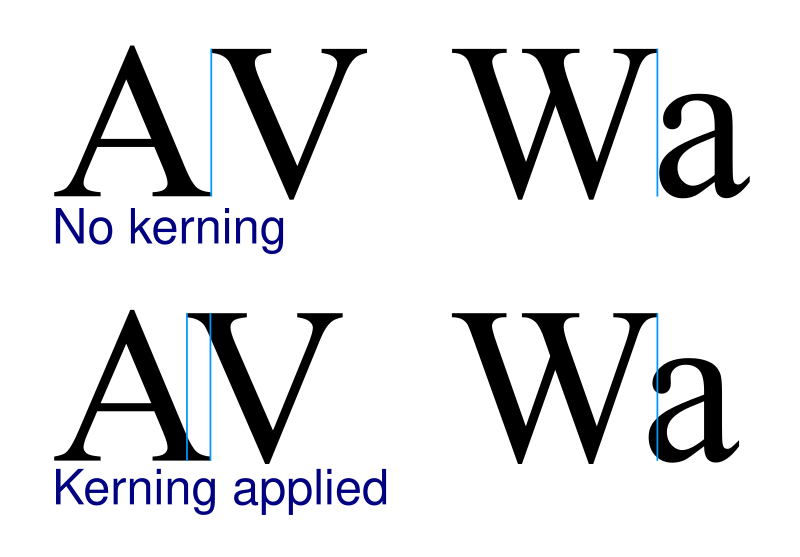 ^ Kerning / Crénage
^ Kerning / Crénage
 ^ Counter : Counter-space is the area of a letter that is entirely or partially enclosed by a letter form or a symbol. There are closed counters (A,B,D,O,P,Q,R) ad open counters (C,F,H,S). The digits (0,4,6,8,9) also have counters.
^ Counter : Counter-space is the area of a letter that is entirely or partially enclosed by a letter form or a symbol. There are closed counters (A,B,D,O,P,Q,R) ad open counters (C,F,H,S). The digits (0,4,6,8,9) also have counters.
 ^ Allograph
^ Allograph
 ^ Dingbat : Printer's ornament.
^ Dingbat : Printer's ornament.
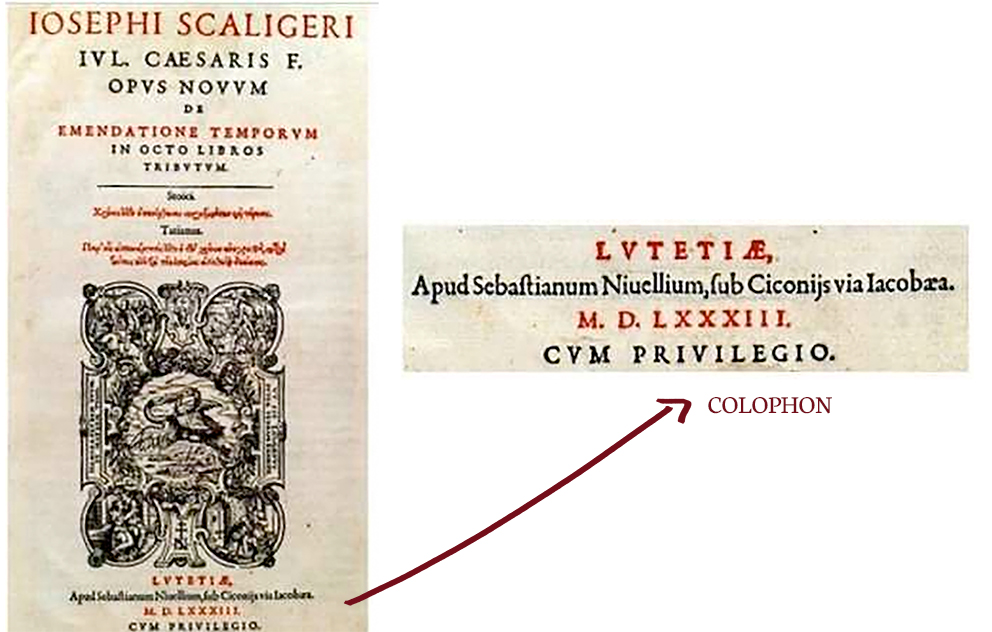 ^ Colophon
^ Colophon
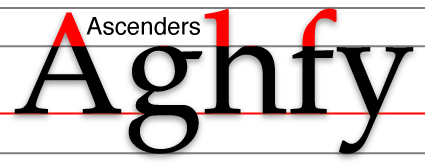 ^ Ascenders / Descenders v
^ Ascenders / Descenders v

 ^ Baseline.
^ Baseline.
 ^ Typography height
^ Typography height

 ^ Figure space : proportional and monospace difference
^ Figure space : proportional and monospace difference
 ^ Anatomy of a Devangari font.
^ Anatomy of a Devangari font.
 ^ "A Specimen", a broadsheet with examples of typefaces and fonts available. (1728)
^ "A Specimen", a broadsheet with examples of typefaces and fonts available. (1728)

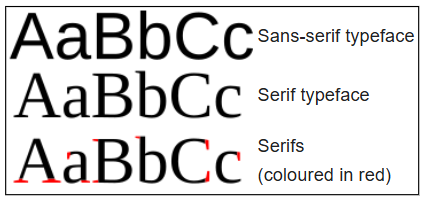 ^ Serif, Sans-serif
^ Serif, Sans-serif

Fraktur is often characterized as "the German typeface", the word "Fraktur" derives from Latin frāctūra ("a break"), built from frāctus, passive participle of frangere ("to break"), which is also the root for the English word "fracture".
Rotunda : The Rotunda is a specific medieval blackletter script. It originates in Carolingian minuscule. Sometimes, it is not considered a blackletter script, but a script on its own. It was used mainly in southern Europe.
Schwabacher : specific style of blackletter typefaces which evolved from Gothic Textualis (Textura) under the influence of Humanist type design in Italy during the 15th century. Schwabacher typesetting was the most common typeface in Germany, until it was replaced by Fraktur from the mid 16th century onwards. In the course of the 18th and 19th centuries (but in Germany not until 1941), Fraktur gave way in turn to Antiqua.
 ^ Gaelic typefaces.
^ Gaelic typefaces.
 ^ Visigothic.
^ Visigothic.
 ^ Lombardic.
^ Lombardic.
 ^ Glagolotic script
^ Glagolotic script
 ^ Uncial / Onciale.
^ Uncial / Onciale.
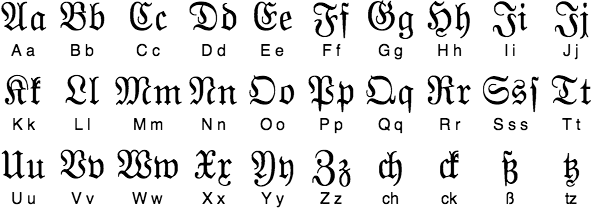 ^ Fraktur.
^ Fraktur.
 ^ Old English.
^ Old English.
 ^ Rotunda.
^ Rotunda.
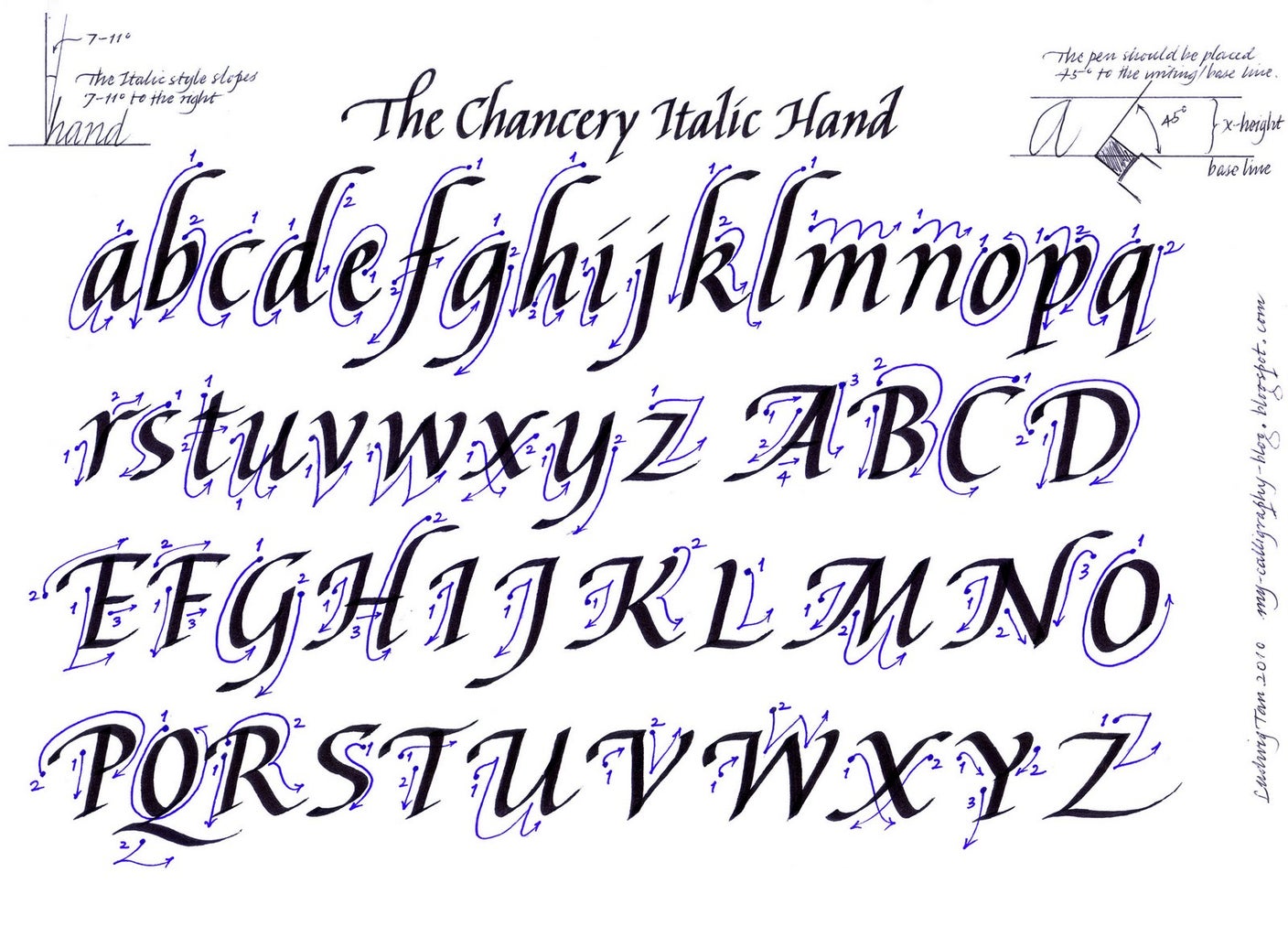
 ^ Chancery : cursive, form of italic script used by the scribes of the papal Chancery in Renaissance Italy, also known as cancellaresca.
^ Chancery : cursive, form of italic script used by the scribes of the papal Chancery in Renaissance Italy, also known as cancellaresca.
 ^ Secretary.
^ Secretary.
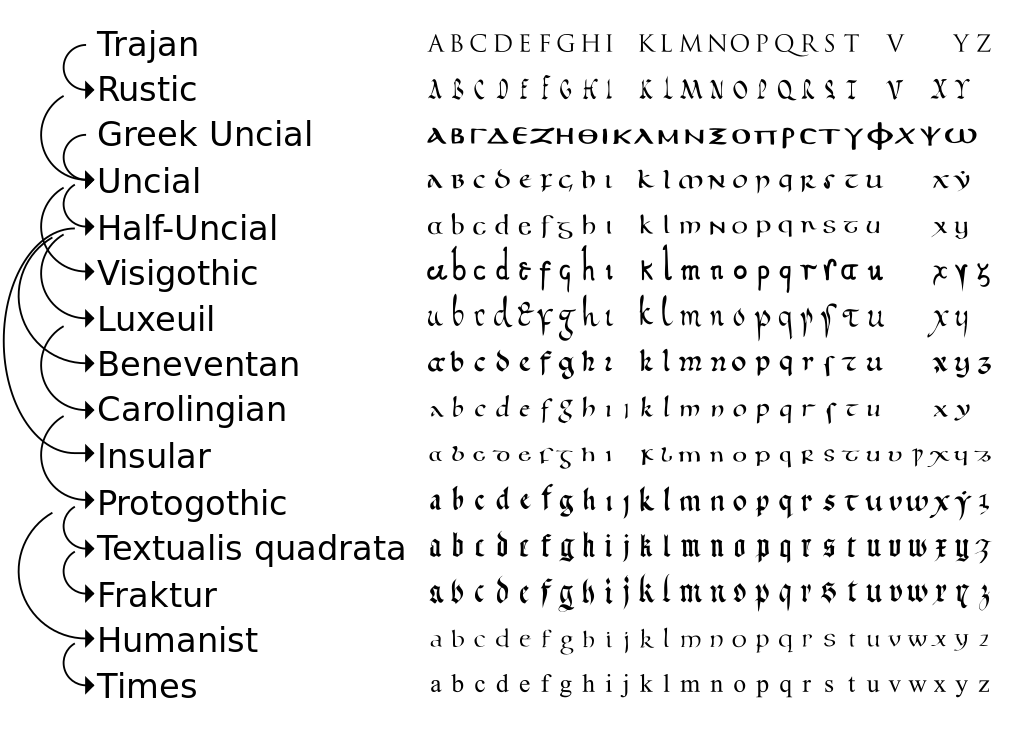 ^ Simplified relationship between various scripts, showing the development of Insular uncial from Roman and the Greek uncial.
^ Simplified relationship between various scripts, showing the development of Insular uncial from Roman and the Greek uncial.

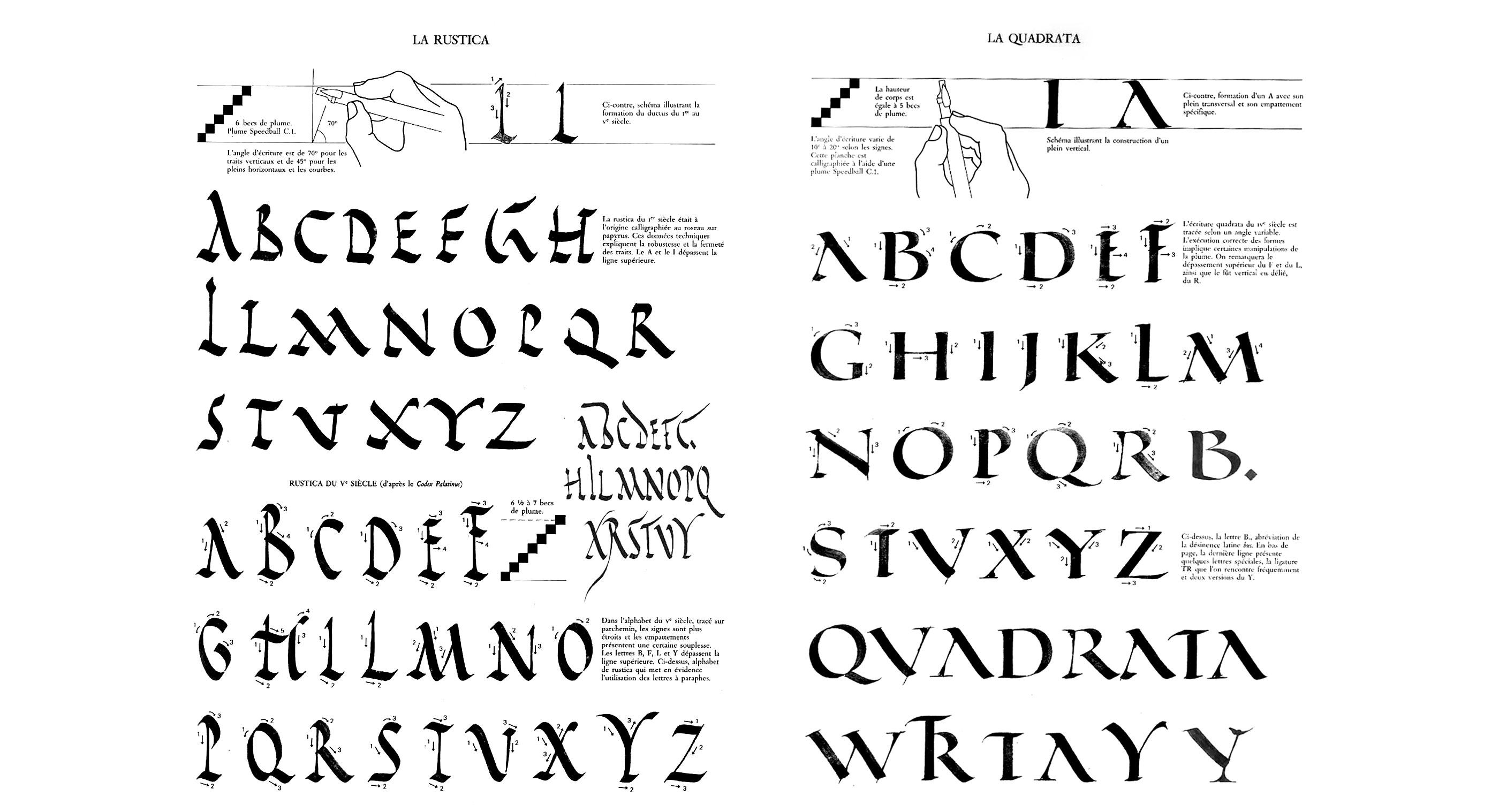


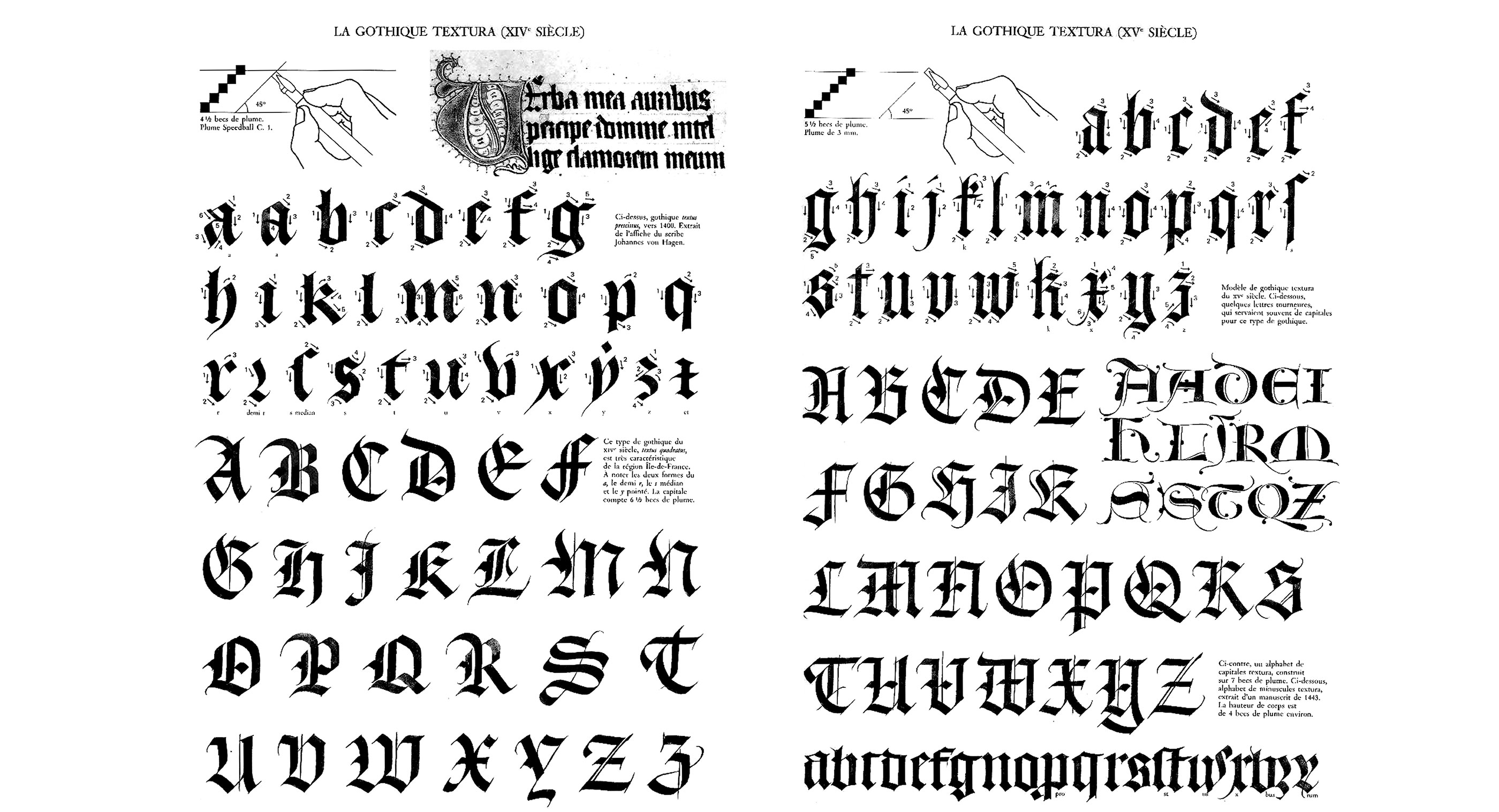

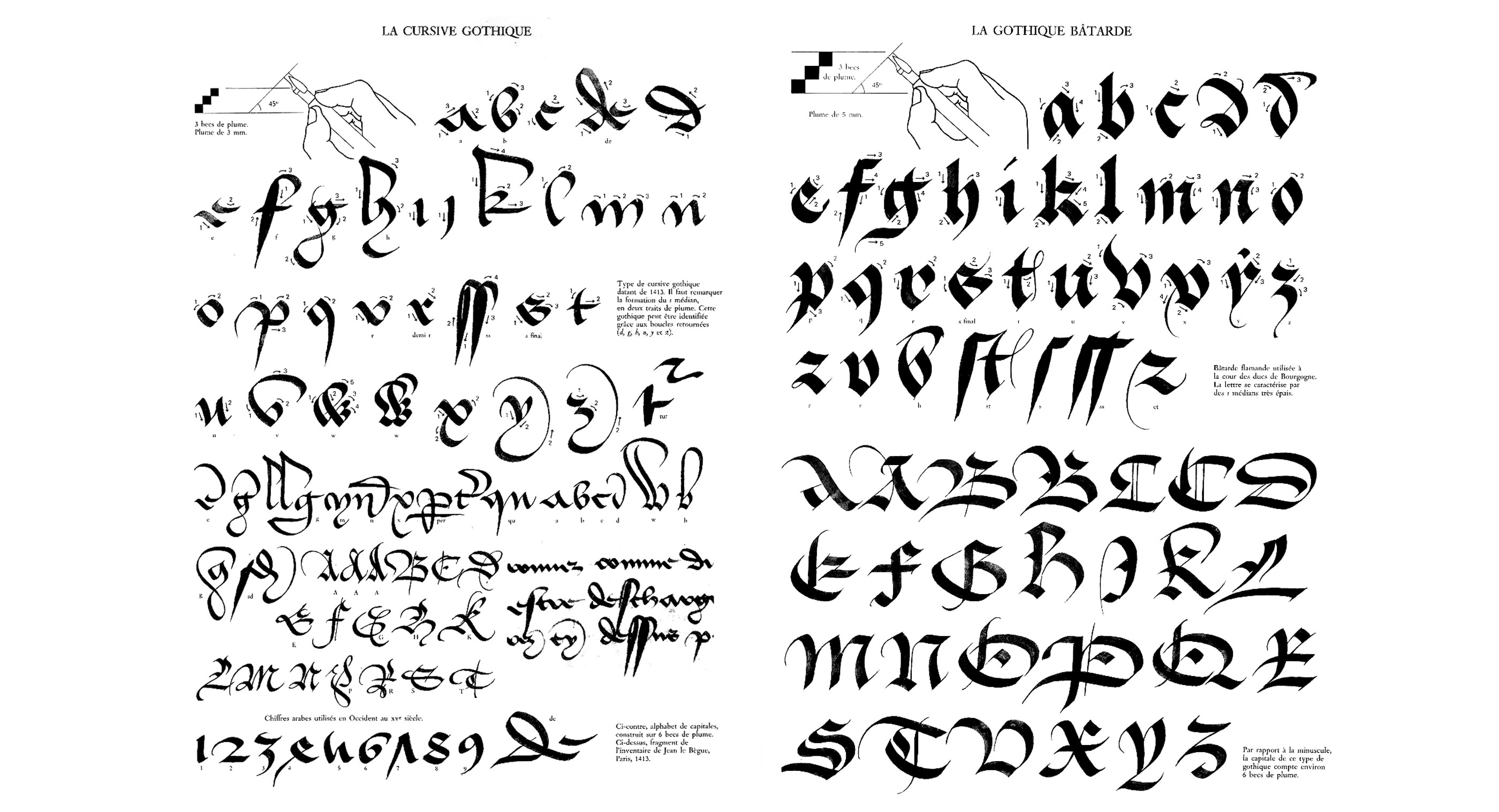
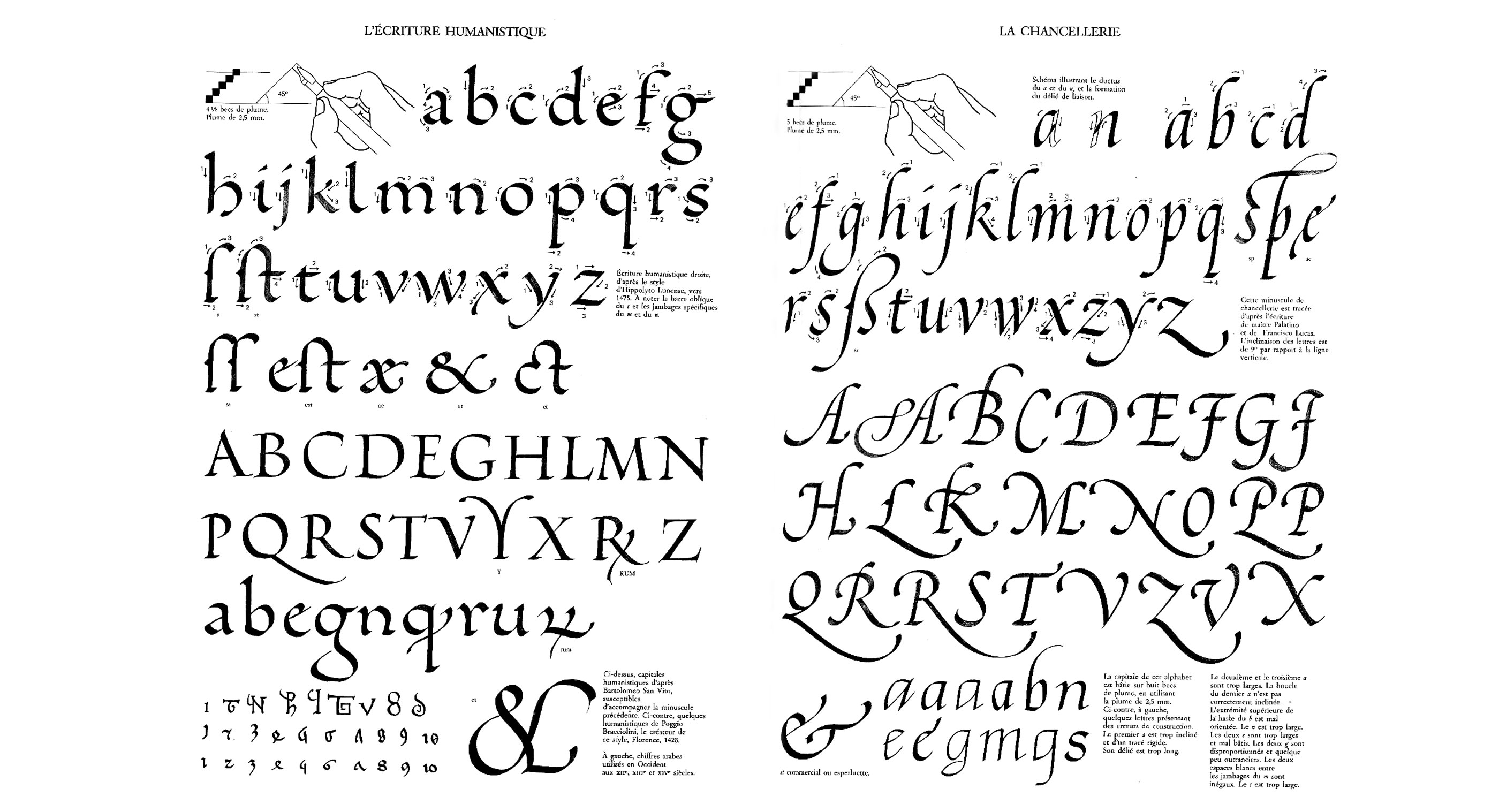

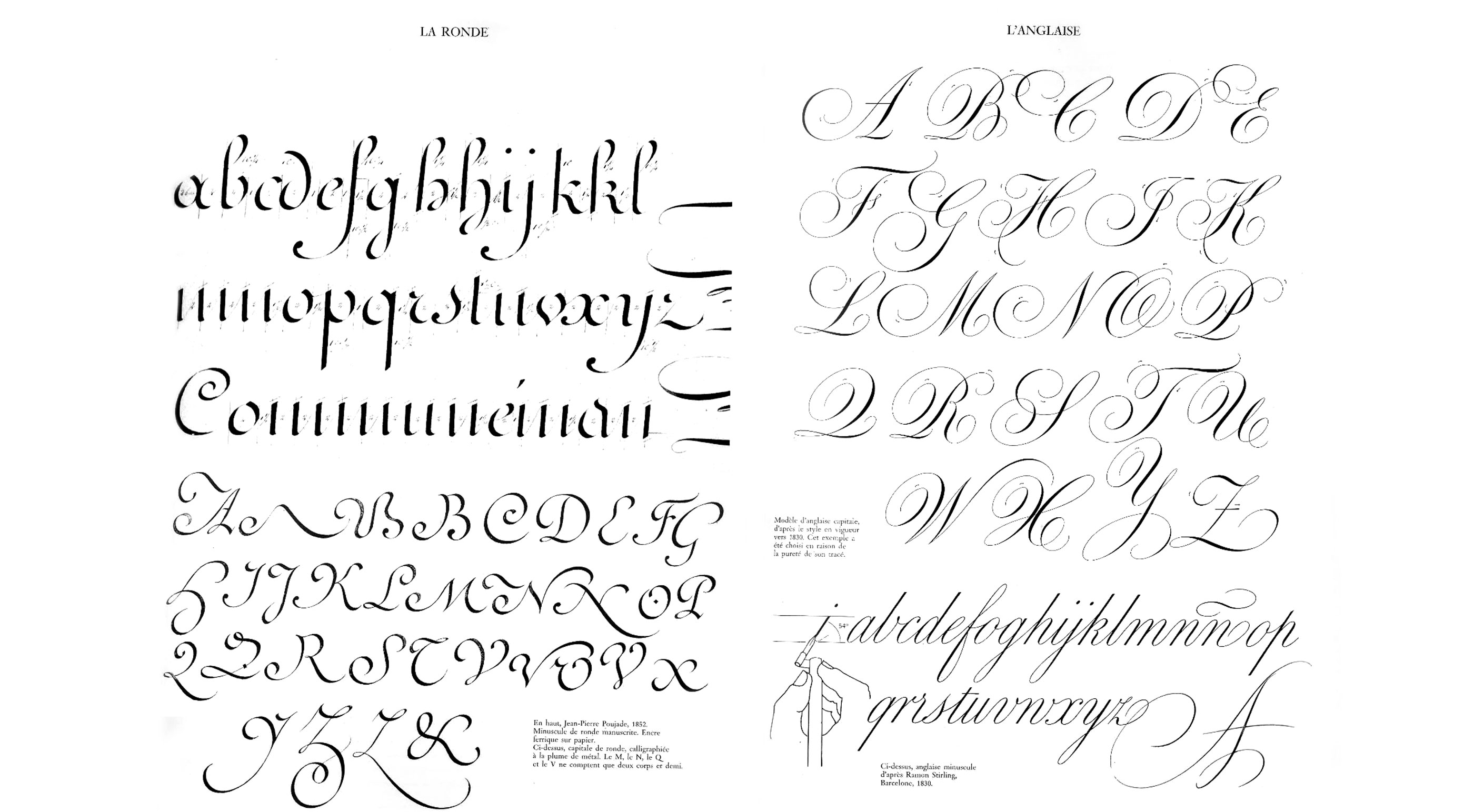

 ^ Claude Mediavilla studies.
^ Claude Mediavilla studies.
 ^ Bastarda / Hybride.
^ Bastarda / Hybride.

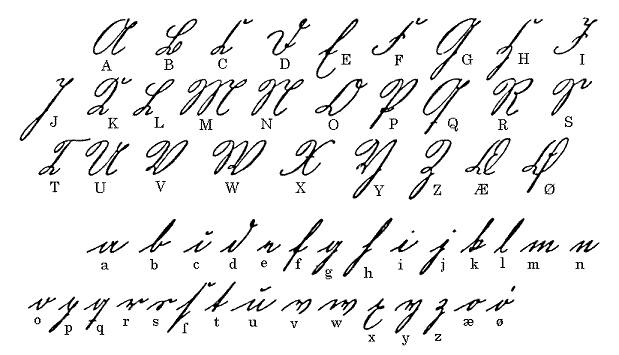 ^ Kurrent
^ Kurrent

 ^ Copperplate
^ Copperplate
 ^ Ronde
^ Ronde
 ^ Spencerian.
^ Spencerian.
 ^ Calligraphic cursive from 1835.
^ Calligraphic cursive from 1835.
 ^ Court Hand : Court hand (also common law hand, Anglicana, cursiva antiquior, and charter hand) was a style of handwriting used in medieval English law courts, and later by professionals such as lawyers and clerks.
^ Court Hand : Court hand (also common law hand, Anglicana, cursiva antiquior, and charter hand) was a style of handwriting used in medieval English law courts, and later by professionals such as lawyers and clerks.
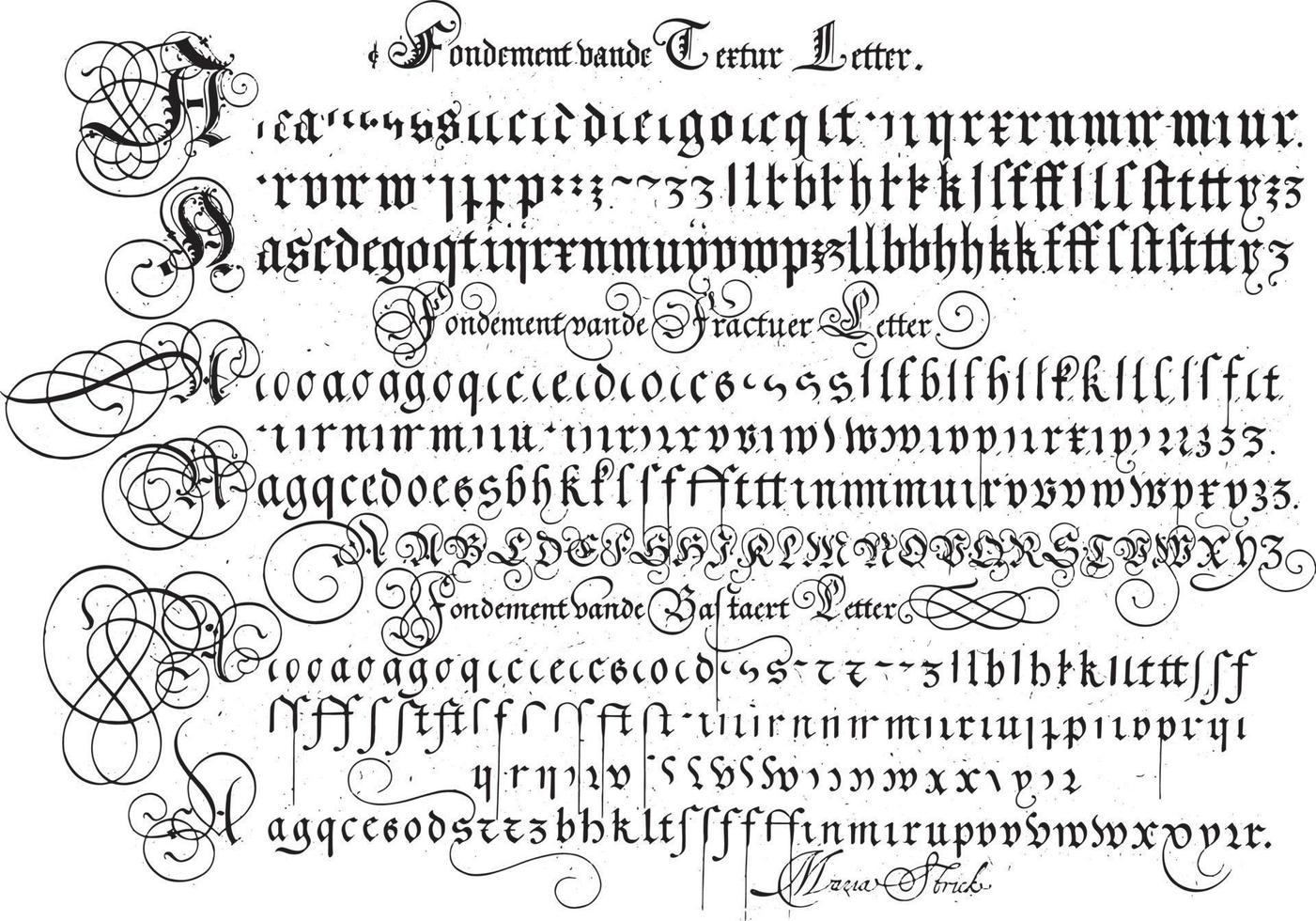
 ^ Fondements.
^ Fondements.
 ^ Book antiqua. (History : Antiqua - Fraktur dispute)
_______
notes : references and research :
Typography wiki pages : https://en.wikipedia.org/wiki/Category:Typography
___
Computer Font article :
oldschool pc fonts by VileR
https://int10h.org/oldschool-pc-fonts/
Generic font families : sans-serif / serif / monospace / cursive / fantasy
figlet
woff (web open font format) / ttf (truetype) / otf (opentype) / svg (scalable vector graphic) / EOT (embedded opentype) / CWT (comptability web type)
@font-face
Pangram
Lorem Ipsum (placeholder text)
^ Book antiqua. (History : Antiqua - Fraktur dispute)
_______
notes : references and research :
Typography wiki pages : https://en.wikipedia.org/wiki/Category:Typography
___
Computer Font article :
oldschool pc fonts by VileR
https://int10h.org/oldschool-pc-fonts/
Generic font families : sans-serif / serif / monospace / cursive / fantasy
figlet
woff (web open font format) / ttf (truetype) / otf (opentype) / svg (scalable vector graphic) / EOT (embedded opentype) / CWT (comptability web type)
@font-face
Pangram
Lorem Ipsum (placeholder text)